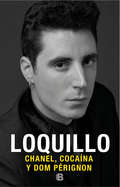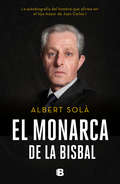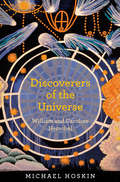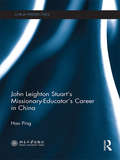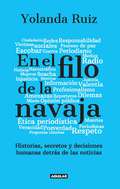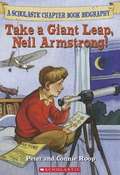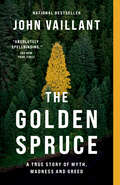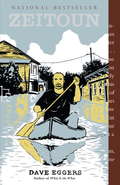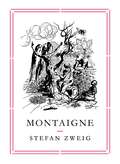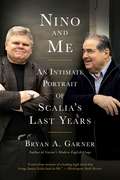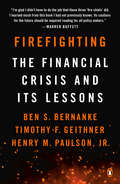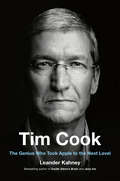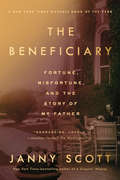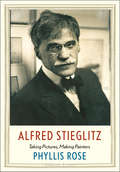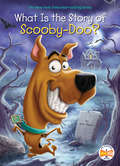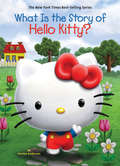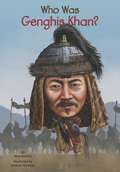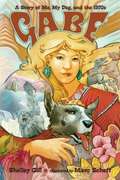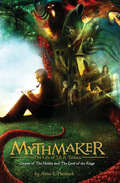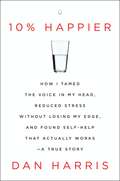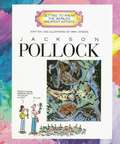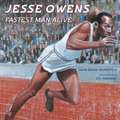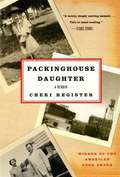- Table View
- List View
Chanel, cocaína y Dom Pérignon
by José María Sanz 'Loquillo'El libro que culmina la saga iniciada con El chico de la bomba. El libro que culmina la saga autobiográfica iniciada con El chico de la bomba; el relato de la vuelta de Loquillo a Barcelona, tras su exitoso paso por el Madrid de los ochenta. El final de la inocencia y la entrada en el negocio musical y sus contradicciones son algunos de los temas de este libro, vistos desde la mirada más personal del autor. «Me gustan las chicas que por condiciónnecesitan tiempo y dedicación,elegantes y bonitas, con liguero de Dior,Chanel nº5, cocaína y Dom Pérignon.» José María Sanz
El monarca de La Bisbal: La autobiografía del hombre que afirma ser el hijo mayor de Juan Carlos I
by Albert SolàLa autobiografía del hombre que afirma ser el hijo mayor de Juan Carlos I. Albert Solà es conocido como «el monarca» en el municipio donde vive: La Bisbal del Ampurdán. Sin embargo, aunque su parecido con Juan Carlos I salta a la vista, sus orígenes están llenos de misterio e incertidumbres. En este libro, Albert narra su vida y las razones que le llevan a afirmar que es el hijo primogénito (e ilegítimo) del rey emérito de España, nacido de una aventura con una joven de la alta burguesía catalana. Durante su infancia y adolescencia, Albert Solà siempre tuvo la sensación de que le observaban; incluso hizo la mili convencido de que le daban un trato especial. Más adelante, cuando empezó a investigar sus orígenes y quiso reclamar documentos sobre su nacimiento y adopción, halló todo tipo de trabas, pero también encontró a muchas personas -desde gente anónima hasta detectives y agentes del Centro Nacional de Inteligencia- que leaseguraron que es hijo del rey emérito Juan Carlos I. El monarca de La Bisbal ofrece, por primera vez, el relato completo y en primera persona de una historia única y fascinante que ha atraído a medios de comunicación de la talla del New York Times. El resultado llega dispuesto a sembrar la polémica.
Discoverers of the Universe: William and Caroline Herschel
by Michael HoskinDiscoverers of the Universe tells the gripping story of William Herschel, the brilliant, fiercely ambitious, emotionally complex musician and composer who became court astronomer to Britain's King George III, and of William's sister, Caroline, who assisted him in his observations of the night sky and became an accomplished astronomer in her own right. Together, they transformed our view of the universe from the unchanging, mechanical creation of Newton's clockmaker god to the ever-evolving, incredibly dynamic cosmos that it truly is. William was in his forties when his amateur observations using a homemade telescope led to his discovery of Uranus, and an invitation to King George's court. He coined the term "asteroid," discovered infrared radiation, was the first to realize that our solar system is moving through space, discovered 2,500 nebulae that form the basis of the catalog astronomers use today, and was unrivalled as a telescope builder. Caroline shared William's passion for astronomy, recording his observations during night watches and organizing his papers for publication. She was the first salaried woman astronomer in history, a pioneer who herself discovered nine comets and became a role model for women in the sciences. Written by the world's premier expert on the Herschels, Discoverers of the Universe traces William and Caroline's many extraordinary contributions to astronomy, shedding new light on their productive but complicated relationship, and setting their scientific achievements in the context of their personal struggles, larger-than-life ambitions, bitter disappointments, and astonishing triumphs.
John Leighton Stuart's Missionary-Educator's Career in China (China Perspectives)
by Hao PingIn China, John Leighton Stuart (1876-1962) is a controversial figure occupying an important position in the history of modern China and Sino-U.S. relations. As a scholar and educator, Stuart loved Chinese culture and contributed much to the development of Chinese education. While as a missionary, he was inherently prejudiced against Marxism. As the U.S. ambassador to China, Stuart executed U.S. government's policy, and was finally stereotyped as a symbol of "American imperialism". This book is a comprehensive and systematic study of Stuart's missionary-educator's career in China. It gives a detailed account of Stuart's missionary activities and contribution to the establishment and development of Yenching University as the founding president in China. Yenching, founded in 1919, left a significant and lasting legacy to Chinese education. It also contributed much to western studies on Asian culture with the Harvard-Yenching Institute established in 1928. By collecting substantial relevant materials both at home and abroad, both published and unpublished, this book reveals the multidimensional and complex features of Stuart, getting rid of the stereotype. Academic and general readers interested in Stuart, missionary education in modern China and modern Chinese history will be attracted by this book.
En el filo de la navaja
by Yolanda RuizEl primer libro de Yolanda Ruiz es un magister en periodismo e historia reciente de país. Yolanda Ruiz recuerda el día que habló con Pablo Escobar para hacer una entrevista que esperó más de dos décadas para ser publicada. Tiene vivo también el impacto de ver los restos del avión que, según se dice en una versión controvertida, mandó a derribar el capo. Ha narrado la muerte de mil maneras y también las búsquedas desesperadas de paz. Frente a las cámaras de televisión y los micrófonos de la radio ha acumulado treinta y cuatro años de periodismo y ha enfrentado retos humanos y éticos. Ese tiempo le permite ver el espejo retrovisor y recordar muchas anécdotas y encrucijadas a las que ha tenido que enfrentarse para narrar el país. ¿Cómo preguntarle a Clara Rojas por su hijo horas después de haber sido liberada tras siete años de secuestro, o a Claudia Morales cuando acaba de denunciar una violación de la que fue víctima en el pasado? ¿De qué manera rectificar si se acaba de decir al aire que el político e industrial Pedro Juan Moreno y sus compañeros de viaje salieron ilesos cuando el helicóptero en el que volaban se fue a pique? ¿Qué hacer si un expresidente cuelga el teléfono en una entrevista al aire? ¿Cómo se aborda la denuncia de un escándalo en la Corte constitucional? ¿Cómo enfrentar el reto digital y las noticias falsas? ¿Cómo informar sobre un secuestro de periodistas o cómo enfrentar una amenaza? ¿Cómo mantener distancia cuando estamos también en la mira de los violentos? Este libro, además de repasar algunos de los sucesos más recordados de Colombia en los últimos 30 años, nos asoma al tras escena de la información para dejarnos ver cómo se cocinan las noticias y entender cómo se toman decisiones difíciles en medio de momentos complejos. Es una evaluación reflexiva y profunda sobre cómo funcionan los medios de comunicación en Colombia, por qué las redes están transformando el oficio, y por qué el afán de la "chiva" sigue dejando muchas lecciones. Una evaluación que solo el tiempo transcurrido y la experiencia de una periodista como Yolanda Ruiz permiten hacer con responsabilidad y humanismo.
Wilma Unlimited: How Wilma Rudolph Became The World's Fastest Woman (Soar To Success)
by David Diaz Kathleen KrullNIMAC-sourced textbook
Take a Giant Leap, Neil Armstrong! (Before I Made History)
by Peter Roop Connie RoopScholastic Chapter Book, Biography of Neil Armstrong, the first man on the moon and what he was like as a young boy. <P><P>Lexile Measure: 720L
The Golden Spruce: A True Story of Myth, Madness and Greed
by John VaillantThe Golden Spruce is the story of a glorious natural wonder, the man who destroyed it, and the fascinating, troubling context in which his act took place. A tree with luminous glowing needles, the golden spruce was unique and, biologically speaking, should never have reached maturity; Grant Hadwin, the man who cut it down, was passionate, extraordinarily well-suited to wilderness survival, and to some degree unbalanced. But as John Vaillant shows, the extraordinary tree stood at the intersection of contradictory ways of looking at the world; the conflict between them is one reason it was destroyed. Taking in history, geography, science and spirituality, this book raises some of the most pressing questions facing society today. The golden spruce stood in the Queen Charlotte Islands (Haida Gwaii), an unusually rich ecosystem where the normal lines between species blur. Without romanticizing, Vaillant shows that this understanding is typified by the Haida, the native people who have lived there for millennia, and for whom the golden spruce was an integral part of their history and mythology. But seen a different way, the golden spruce stood in block 6 of Tree Farm License 39. Grant Hadwin had worked as a remote scout for timber companies. But over time Hadwin was pushed into a paradox: the better he was at his job, the more the world he loved was destroyed. On January 20, 1997, with the temperature near zero, Hadwin swam across the Yakoun River with a chainsaw. He tore into the golden spruce, leaving it so unstable that the first wind would push it over. A few weeks later, Hadwin set off in a kayak across the treacherous Hecate Strait to face court charges. He has not been heard from since.Vaillant describes Hadwin’s actions in engrossing detail, but also provides the complex environmental, political and economic context in which they took place. The Golden Spruce forces one to ask: can the damage our civilization exacts on the natural world be justified?
Zeitoun
by Dave EggersIn the wake of Hurricane Katrina, longtime New Orleans residents Abdulrahman and Kathy Zeitoun are cast into unthinkable struggle with forces beyond wind and water. Good Samaritan Abdulrahman has stayed on in the city, traversing its deeply flooded streets by canoe, feeding trapped dogs and rescuing survivors, as New Orleans becomes a disaster zone. But nothing could prepare him for the wholly unexpected nightmare that follows . . . 'As a piece of writing, Eggers's book is sublime - simple and unintrusive in style. He builds the characters well and then lets them drive the story. ' Gary Younge, The Guardian 'Dave Eggers' account of one man's ordeal rebukes the Bush regime. ' Valerie Martin, The Observer 'What happened to Zeitoun and his family over the next month is an extraordinary story, related by Dave Eggers, a skilled practitioner of literary non-fiction, with both dramatic flair and domestic sympathy'. Sameer Rahim, The Telegraph 'Reminiscent of Gabriel García Marquez's documentaries, this is a true story told with the skills of a master of fiction. It's an immensely readable account of ordinary people struggling through extraordinary circumstances. ' Robin Yassin-Kassab, The Independent 'How could this happen in America? It's the stuff of great narrative non-fiction . . . Fifty years from now, when people want to know what happened to this once-great city during a shameful episode of our history, they will still be talking about a family named Zeitoun' The New York Times Book Review 'A riveting, intimate, wide-scanning, disturbing, inspiring nonfiction account . . . Humanistic in the highest, best, least boring sense of the word' Vanity Fair 'A fiercely elegant and simply eloquent tale . . . So fierce in its fury, so beautiful in its richly nuanced, compassionate telling of an American tragedy, and finally, so sweetly, stubbornly hopeful' Times-Picayune (New Orleans)
Montaigne (Pushkin Collection)
by Stefan Zweig Will StoneWritten during the Second World War, Zweig's typically passionate and readable biography of Michel de Montaigne, is also a heartfelt argument for the importance of intellectual freedom, tolerance and humanism. Zweig draws strong parallels between Montaigne's age, when Europe was torn in two by conflict between Catholicism and Protestantism, and his own, in which the twin fanaticisms of Fascism and Communism were on the verge of destroying the pan-continental liberal culture he was born into, and loved dearly. Just as Montaigne sought to remain aloof from the factionalism of his day, so Zweig tried to the last to defend his freedom of thought, and argue for peace and compromise. One of the final works Zweig wrote before his suicide, this is both a brilliantly impassioned portrait of a great mind, and a moving plea for tolerance in a world ruled by cruelty.From the Trade Paperback edition.
Nino and Me: My Unusual Friendship with Justice Antonin Scalia
by Bryan A. GarnerFrom legal expert and veteran author Bryan Garner comes a unique, intimate, and compelling memoir of his friendship with the late Supreme Court Justice Antonin Scalia.For almost thirty years, Antonin Scalia was arguably the most influential and controversial Justice on the United States Supreme Court. His dynamic and witty writing devoted to the Constitution has influenced an entire generation of judges. Based on his reputation for using scathing language to criticize liberal court decisions, many people presumed Scalia to be gruff and irascible. But to those who knew him as “Nino,” he was characterized by his warmth, charm, devotion, fierce intelligence, and loyalty. Bryan Garner’s friendship with Justice Scalia was instigated by celebrated writer David Foster Wallace and strengthened over their shared love of language. Despite their differing viewpoints on everything from gun control to the use of contractions, their literary and personal relationship flourished. Justice Scalia even officiated at Garner’s wedding. In this humorous, touching, and surprisingly action-packed memoir, Garner gives a firsthand insight into the mind, habits, and faith of one of the most famous and misunderstood judges in the world.
Firefighting: The Financial Crisis and Its Lessons (Images Of America Ser.)
by Henry M. Paulson Ben S. Bernanke Timothy F. GeithnerFrom the three primary architects of the American policy response to the worst economic catastrophe since the Great Depression, a magnificent big-picture synthesis--from why it happened to where we are now.In 2018, Ben Bernanke, Tim Geithner, and Hank Paulson came together to reflect on the lessons of the 2008 financial crisis ten years on. Recognizing that, as Ben put it, "the enemy is forgetting," they examine the causes of the crisis, why it was so damaging, and what it ultimately took to prevent a second Great Depression. And they provide to their successors in the United States and the finance ministers and central bank governors of other countries a valuable playbook for reducing the damage from future financial crises. Firefighting provides a candid and powerful account of the choices they and their teams made during the crisis, working under two presidents and with the leaders of Congress.
Tim Cook: The Genius Who Took Apple to the Next Level
by Leander KahneyJournalist Leander Kahney reveals how CEO Tim Cook has led Apple to astronomical success after the death of Steve Jobs in 2011. The death of Steve Jobs left a gaping void at one of the most innovative companies of all time. Jobs wasn't merely Apple's iconic founder and CEO; he was the living embodiment of a global megabrand. It was hard to imagine that anyone could fill his shoes--especially not Tim Cook, the intensely private executive who many thought of as Apple's "operations drone."But seven years later, as journalist Leander Kahney reveals in this definitive book, things at Apple couldn't be better. Its stock has nearly tripled, making it the world's first trillion dollar company. Under Cook's principled leadership, Apple is pushing hard into renewable energy, labor and environmentally-friendly supply chains, user privacy, and highly-recyclable products. From the massive growth of the iPhone to lesser-known victories like the Apple Watch, Cook is leading Apple to a new era of success.Drawing on access with several Apple insiders, Kahney tells the inspiring story of how one man attempted to replace someone irreplacable, and--through strong, humane leadership, supply chain savvy, and a commitment to his values--succeeded more than anyone had thought possible.
The Beneficiary: Fortune, Misfortune, and the Story of My Father
by Janny ScottA parable for the new age of inequality: part family history, part detective story, part history of a vanishing class, and a vividly compelling exploration of the degree to which an inheritance—financial, cultural, genetic—conspired in one person's self-destruction.Land, houses, and money tumbled from one generation to the next on the eight-hundred-acre estate built by Scott's investment banker great-grandfather on Philadelphia's Main Line. There was an obligation to protect it, a license to enjoy it, a duty to pass it on—but it was impossible to know in advance how all that extraordinary good fortune might influence the choices made over a lifetime. In this warmly felt tale of an American family's fortunes, journalist Janny Scott excavates the rarefied world that shaped her charming, unknowable father, Robert Montgomery Scott, and provides an incisive look at the weight of inheritance, the tenacity of addiction, and the power of buried secrets.Some beneficiaries flourished, like Scott's grandmother, Helen Hope Scott, a socialite and celebrated horsewoman said to have inspired Katherine Hepburn's character in the play and Academy Award-winning film The Philadelphia Story. For others, including the author's father, she concludes, the impact was more complex.Bringing her journalistic talents, light touch, and crystalline prose to this powerful story of a child's search to understand a parent's puzzling end, Scott also raises questions about our new Gilded Age. New fortunes are being amassed, new estates are being born. Does anyone wonder how it will all play out, one hundred years hence?
Alfred Stieglitz: Taking Pictures, Making Painters (Jewish Lives)
by Phyllis RoseA fascinating biography of a revolutionary American artist ripe for rediscovery as a photographer and champion of other artists Alfred Stieglitz (1864–1946) was an enormously influential artist and nurturer of artists even though his accomplishments are often overshadowed by his role as Georgia O’Keeffe’s husband. This new book from celebrated biographer Phyllis Rose reconsiders Stieglitz as a revolutionary force in the history of American art. Born in New Jersey, Stieglitz at age eighteen went to study in Germany, where his father, a wool merchant and painter, insisted he would get a proper education. After returning to America, he became one of the first American photographers to achieve international fame. By the time he was sixty, he gave up photography and devoted himself to selling and promoting art. His first gallery, 291, was the first American gallery to show works by Picasso, Rodin, Matisse, and other great European modernists. His galleries were not dealerships so much as open universities, where he introduced European modern art to Americans and nurtured an appreciation of American art among American artists.
What Is the Story of Scooby-Doo? (What Is the Story Of?)
by Who HQ M. D. PayneYour favorite characters are now part of the Who HQ library! Nothing mysterious about it! Learn all about how Scooby and his friends took over Saturday mornings--and then the world--in this debut title in the What Is the Story Of? series.Most kids are familiar with the always-hungry, scaredy-cat Great Dane called Scooby-Doo and his true-blue friends of Mystery Inc. But how did Scooby and the gang make it onto the silver screen? Author M. D. Payne lays out the whole groovy tale in this book that's sure to have readers shouting, "Zoinks!"
What Is the Story of Hello Kitty? (What Is the Story Of?)
by Jill Weber Kirsten Anderson Who HqYour favorite characters are now part of the Who HQ library! Say hello to the premier title in the What Is the Story Of? series. Hello Kitty!This cute cartoon character who's shaped like a bobtail cat and wears a bow in her hair has become an icon of our times. Hello Kitty, as she is known, is a piano-playing, cookie-baking darling from London with a heart of gold. Readers will learn all about Kitty, who was first created in Japan, but has since gone on to capture the imagination of people all around the world. Super fans of the super-fashionable Kitty will be thrilled to see her debut in the Who HQ brand.
Johannes Gutenberg: Inventor Of The Printing Press (Signature Lives Series)
by Fran Rees Frank Romano Rosemary G. PalmerA biography profiling the life of Johannes Gutenberg, a man from the Renaissance era who is best known for developing the printing press that took the place of the time-consuming method of copying books by hand. <P><P>Gutenberg's greatest accomplishment was the printing of a Latin Bible -- the Gutenberg Bible, as it came to be known. His name became forever linked to this magnificent masterpiece and to the printing press that transformed the world.
Who Was Genghis Khan? (Who was?)
by Andrew Thomson Nico Medina Nancy HarrisonNamed Temujin at birth by his nomadic family in early Mongolia, the great Genghis Khan used his skill and cunning to create the Mongol Empire and conquer almost the entire continent of Asia. As ruler of the largest empire in human history, he was as respected as he was feared. Learn more about the man and the legend in Who Was Genghis Khan?
Gabe: A story of me, my dog, and the 1970s
by Shelley Gill Marc ScheffAuthor Shelley Gill was seventeen-years-old in 1972 and a free spirit protesting the Vietnam War, marching for civil rights, and finding her way in a changing world. While volunteering in the medical tent at the first Rainbow Gathering in Granby, Colorado, Shelley met Gabe—a blue merle husky mix puppy abandoned by his owner. Gabe quickly became Shelley’s best friend and protector. They travelled the country together, hitchhiking to New Orleans, to Indiana, to New York City, to the Rocky Mountains, and eventually to Alaska, where they stayed. <P><P> Shelley Gill has lived full-force, grabbing life by the horns and not letting go. Her spirit and attitude are ever-present in this autobiography, which is a snapshot of a turbulent time in American history, as well as a love-letter to cherished dog.
Mythmaker: The Life of J.R.R. Tolkien, Creator of The Hobbit and The Lord of the Rings
by Anne E. NeimarkA philologist of world renown, a professor at Oxford, and the author of academic treatises, J. R. R. Tolkien was far more than a fantasy book writer. His lifelong fascination with medieval texts and languages gave him a unique vision and endless inspiration for his tales. His broad interests made possible his creation of faery worlds and entire races of beings, as well as the languages, cultures, and characters that make his books as engaging today as they were fifty years ago. This clear and thoroughly researched biography of the creator of The Hobbit is accompanied by magical illustrations that recall the mystery of Tolkien's imaginary worlds.
10% Happier: How I Tamed the Voice in My Head, Reduced Stress Without Losing My Edge, and Found Self-Help That Actually Works--A True Story
by Dan HarrisWinner of the 2014 Living Now Book Award for Inspirational MemoirNightline anchor Dan Harris embarks on an unexpected, hilarious, and deeply skeptical odyssey through the strange worlds of spirituality and self-help, and discovers a way to get happier that is truly achievable.After having a nationally televised panic attack on Good Morning America, Dan Harris knew he had to make some changes. A lifelong nonbeliever, he found himself on a bizarre adventure, involving a disgraced pastor, a mysterious self-help guru, and a gaggle of brain scientists. Eventually, Harris realized that the source of his problems was the very thing he always thought was his greatest asset: the incessant, insatiable voice in his head, which had both propelled him through the ranks of a hyper-competitive business and also led him to make the profoundly stupid decisions that provoked his on-air freak-out.We all have a voice in our head. It's what has us losing our temper unnecessarily, checking our email compulsively, eating when we're not hungry, and fixating on the past and the future at the expense of the present. Most of us would assume we're stuck with this voice - that there's nothing we can do to rein it in - but Harris stumbled upon an effective way to do just that. It's a far cry from the miracle cures peddled by the self-help swamis he met; instead, it's something he always assumed to be either impossible or useless: meditation. After learning about research that suggests meditation can do everything from lower your blood pressure to essentially rewire your brain, Harris took a deep dive into the underreported world of CEOs, scientists, and even marines who are now using it for increased calm, focus, and happiness.10% Happier takes readers on a ride from the outer reaches of neuroscience to the inner sanctum of network news to the bizarre fringes of America's spiritual scene, and leaves them with a takeaway that could actually change their lives.
Jackson Pollock (Getting to Know the World's Greatest Artists)
by Mike VeneziaRecounts the artist's childhood and education, describes influences on his work, and looks at several of his major paintings
Jesse Owens: Fastest Man Alive
by Carole Boston Weatherford Eric Velasquez<p>Jesse Owens grew up during the time of Jim Crow laws, but segregation never slowed him down. After setting world records for track in high school and college, he won a slot on the 1936 U.S. Olympic team. That year, the Olympics were in Berlin, then controlled by the Nazis, and Hitler was certain they would be a chance to prove to the world that Aryans were superior to all other races. But the triumph of Jesse's will helped him run through any barrier, winning four gold medals and the hearts of millions, setting two world records, and proving the Nazi dictator unmistakably wrong. <p>The story of Jesse Owens comes alive for young readers with Carole Boston Weatherford's award-winning free verse poetry. Eric Velasquez tackles this challenging subject with the use of pastels for the first time in twenty years-a technique that is both heart-stopping and immediate.</p>
Packinghouse Daughter: A Memoir
by Cheri Register<p>The violence that erupted when the company "replaced" its union workers with strikebreakers tested family loyalty and community stability, and attracted national attention when the governor of Minnesota called in the National Guard, declared martial law, and closed the plant. <p>Register skillfully interweaves her own memories, historical research, and first-person interviews of participants on both sides of the strike into a narrative that is thoughtful and impassioned about the value of blue-collar work and the dignity of those who do it. Packinghouse Daughter also testifies to the hold that childhood experience has on personal values and notions of social class, despite the upward mobility that is the great promise of American democracy.</p>
